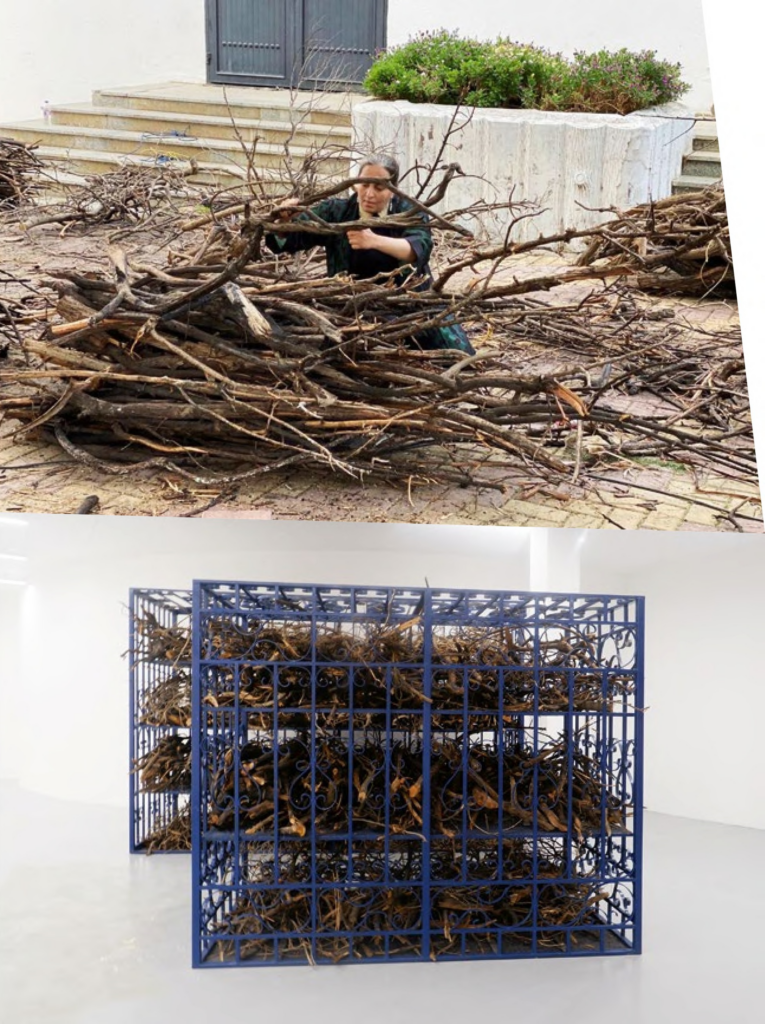Born in 1987 in Jizan, Saudi Arabia, where she lives and works
Blue Windows
2022
Reem Al Nasser’s multimedia practice is steeped in the rituals and traditions of her native Jizan, a port city near Saudi Arabia’s southern border to Yemen. Upon completing her degree in economics at Jazan University in 2011, she began exploring and documenting the long-standing customs of communities around her, gathering oral histories from elders. Al Nasser is not only interested in preserving the rich cultural history of her region, but also in unpacking and questioning social behaviors that define collective and individual identity.
Blue Windows (2022) is made up of charred and discarded branches of juniper—a tree known as arar in Arabic—from the woodlands of the mountainous Aseer Province. Stacked on shelves inside two large structures resembling metal grates, the wood bears witness to the fires that blazed through the region’s Al Jarrah Park in 2021. Due to strong winds and steep slopes, the fires were hard to contain and ravaged large forests of mature juniper trees that were over one hundred years old. When the fires were finally put out, the artist traveled to Abha, the capital of Aseer, to witness the damage and pay her respects to the arar trees. She vividly remembers the sadness and emotional turmoil the forest fire wrought on the surrounding community.
The large installation pays tribute to one of Abha’s most precious resources, used to produce juniper tar oil and furniture. As the title suggests, the flourishes and color of the metal containers recall the traditional windows of Abha, which are typically painted blue to denote the sky and heavens and to invite God’s blessings into one’s home. The multi layered form of these containers mirrors the region’s terraced mountains, a commemoration of ancient agricultural practices; they also recall the horizontal lines of stones typically found on building façades in Abha, which facilitate rainwater runoff. Blue Windows not only captures a dramatic moment of destruction but also tells a story of loss, mourning, and hope—within a changing ecology.



